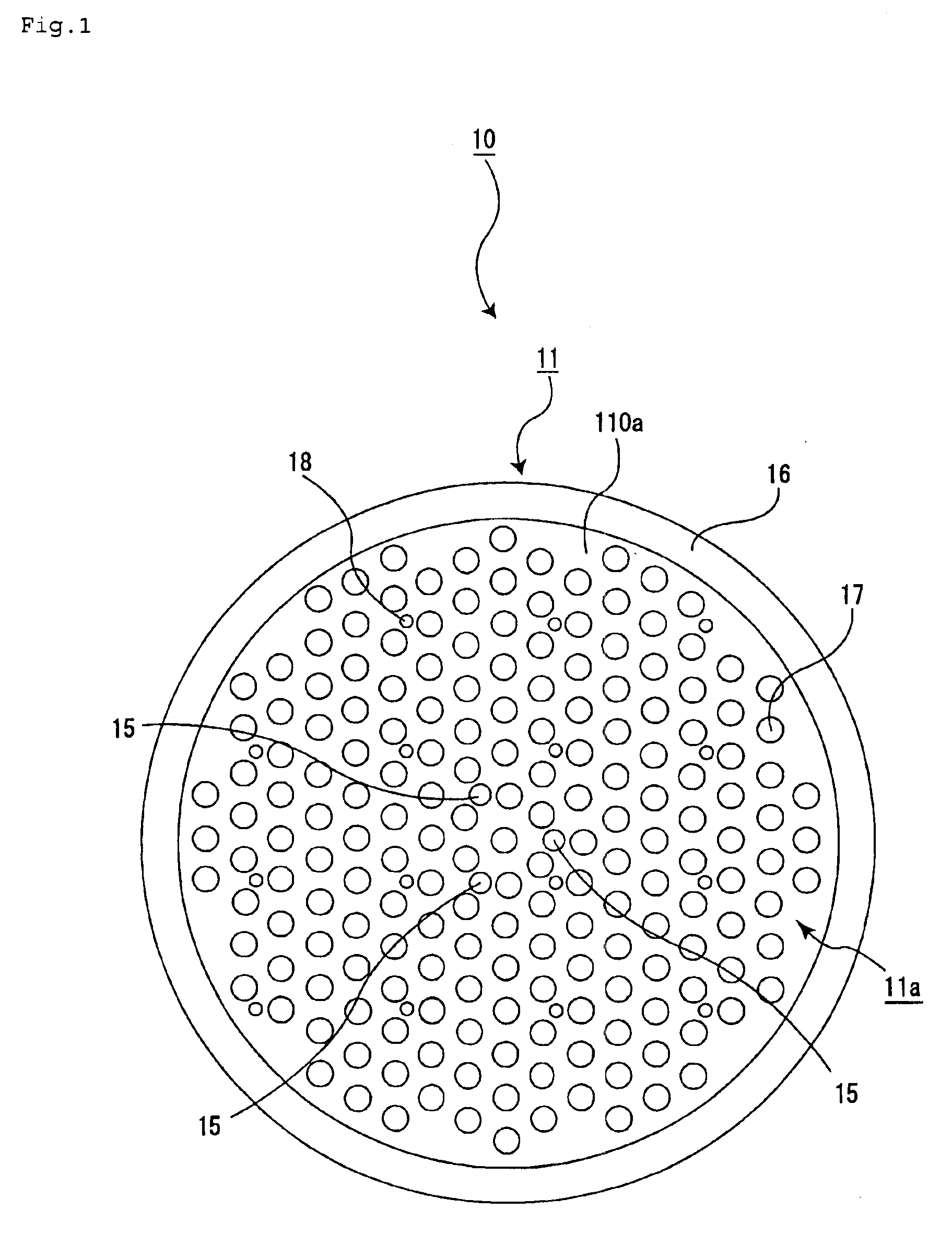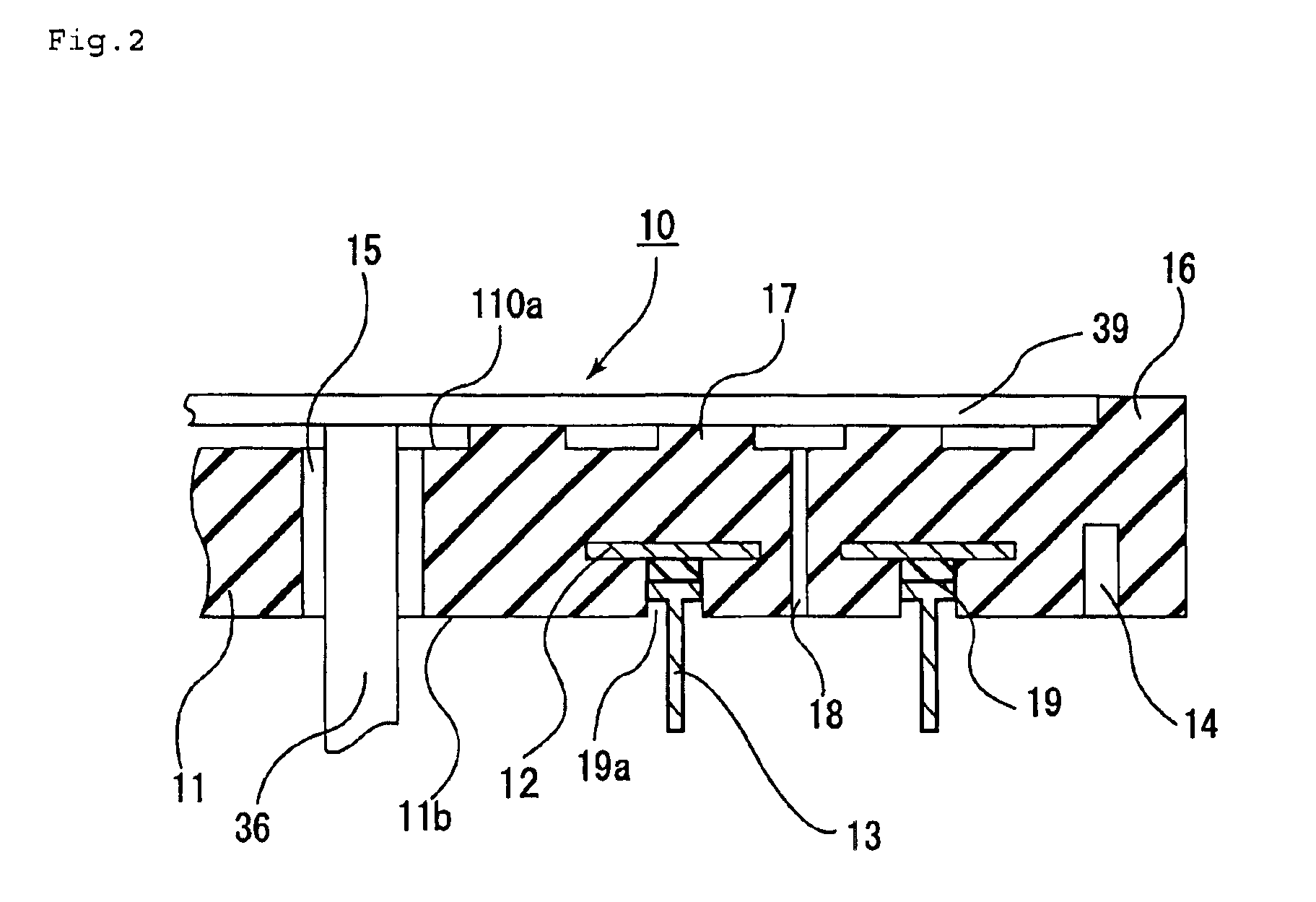Ceramic substrate for semiconductor manufacturing, and method of manufacturing the ceramic substrate
a ceramic substrate and semiconductor technology, applied in the direction of ohmic resistance heating, electric heating, hot plate heating arrangement, etc., can solve the problems of insufficient temperature-rising speed of semiconductor wafers, damage to semiconductors or the like,
- Summary
- Abstract
- Description
- Claims
- Application Information
AI Technical Summary
Benefits of technology
Problems solved by technology
Method used
Image
Examples
example 1
Production of a Ceramic Heater (See FIGS. 1 to 3 and 12)
[0314](1) The following paste was used to conduct formation by doctor blade method to obtain green sheets with a thickness of 0.47 mm: a paste obtained by mixing 100 parts by weight of aluminum nitride powder (made by Tokuyama Corp., average particle diameter: 0.6 μm), 4 parts by weight of alumina, 11.5 parts by weight of an acrylic resin binder, 0.5 part by weight of a dispersant and 53 parts by weight of alcohol containing 1-butanol and ethanol.
[0315](2) Next, the green sheet was dried at 80° C. for 5 hours, and subsequently portions which would be conductor-filled through holes 19 were made by punching.
[0316](3) The following were mixed to prepare a conductor containing paste A: 100 parts by weight of tungsten carbide particles having an average particle diameter of 1 μm, 3.0 parts by weight of an acrylic binder, 3.5 parts by weight of α-terpineol solvent, and 0.3 part by weight of a dispersant.
[0317]The following were mixed...
example 2
Production of a Ceramic Heater (See FIGS. 4, 5 and 13)
[0329](1) A composition made of 100 parts by weight of aluminum nitride powder (average particle diameter: 0.6 μm), 4 parts by weight of yttria (average particle diameter: 0.4 μm), 12 parts by weight of an acrylic binder and an alcohol was subjected to spray-drying to make a granular powder.
[0330](2) Next, this granular powder was put into a mold and formed into a flat plate form to obtain a raw formed body (green).
[0331](3) Next, the raw formed body was hot-pressed at 1800° C. and under a pressure of 20 MPa to obtain an aluminum nitride plate having a thickness of 3 mm.
[0332]Next, this plate was cut off into a disk having a diameter of 230 mm. In this way, a plate made of the ceramic (ceramic substrate 21) was prepared. This ceramic substrate 21 was drilled to make through holes 25 for lifter pins for letting lifter pins 36 for a silicon wafer pass through, and bottomed holes 24, in which thermocouples would be embedded. Further...
example 3
[0344]A ceramic heater was produced in the same way as in Example 1 except that semispherical convex bodies 17 (see FIG. 7(c)) having a height of 0.3 mm were formed, the surface was etched with a 0.1 N aqueous solution of HF / HNO3 mixed acid and polished with a diamond paste having an average particle diameter of 5 μm.
PUM
| Property | Measurement | Unit |
|---|---|---|
| Length | aaaaa | aaaaa |
| Surface roughness | aaaaa | aaaaa |
| Temperature | aaaaa | aaaaa |
Abstract
Description
Claims
Application Information
 Login to View More
Login to View More - R&D
- Intellectual Property
- Life Sciences
- Materials
- Tech Scout
- Unparalleled Data Quality
- Higher Quality Content
- 60% Fewer Hallucinations
Browse by: Latest US Patents, China's latest patents, Technical Efficacy Thesaurus, Application Domain, Technology Topic, Popular Technical Reports.
© 2025 PatSnap. All rights reserved.Legal|Privacy policy|Modern Slavery Act Transparency Statement|Sitemap|About US| Contact US: help@patsnap.com



